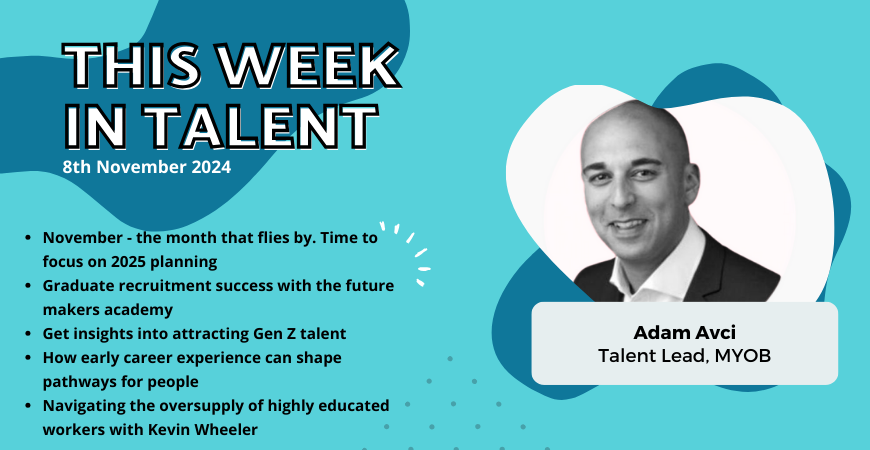As digital transformation continues to accelerate across the globe, the way the banking industry operates is continuing to rapidly change as it becomes increasingly data and technology driven.
For ANZ, one of the top four banks in Australia and the largest banking group in New Zealand and Pacific, these shifts have meant they needed to find a more effective way to attract and recruit adaptive graduates, who would be able to develop the critical capabilities needed to succeed in a fast paced, digital world.
Their solution was to ditch the traditional resume driven hiring process and embrace ethical AI driven technology. ANZ created a graduate recruitment approach that was robust and fair to candidates from diverse backgrounds, as well as being a dynamic and fun experience.
Goodbye resumes, hello behavioural science and AI
For a start, ANZ built a model of what success looked like through the lens of both performance and values that are important to the organisation. These values include integrity, collaboration, respect and embracing learning opportunities.
Then, rather than asking candidates to submit resumes or complete self-report assessments, applicants are invited to play a series of neuroscience-based games on the pymetrics Talent matching platform, which captures objective behavioural data to make better predictions about fit and potential. Importantly, the platform acts as a ‘blind audition’ for each candidate with their name, gender, ethnicity, specific university and any self-reported disabilities excluded from the process.
According to Cholena Orr, Head of Graduate Recruitment at ANZ, this has improved the overall graduate experience as well as introduced a more diverse pool of Talent into the organisation.
A stand-out experience
Cholena and her team knew they had to design a graduate recruitment experience that would be both memorable and fun for prospective candidates, not least because some graduates might receive up to 16 offers from competing organisations. Introducing a gaming experience has given them just the edge they need in this highly competitive environment.
Previously, candidates would spend around two hours on the application process which included uploading their resume, submitting responses and completing a personality profile. This process has now been replaced by the 39-minute application which consists entirely of a series of carefully considered online exercises.
Not surprisingly, the application process is proving popular with candidates. Registration rates are up by 11 percent to 99.6 percent, while application completion rates are up five percent to 99.7 percent. Satisfaction levels with the process stand at 95 percent.
“We are now attracting candidates who may not have previously thought of ANZ as an employer of choice, as they have heard from peers that the recruitment process is both fun and efficient. It is also showing them that ANZ is walking the talk when it comes to embracing new thinking and new technology,” Cholena noted.
A more human experience
Antithetical as it sounds, by introducing AI and data decisioning to the beginning of the recruitment process, Cholena and her team now have the time to make the experience with ANZ more human.
“We are laser focused on creating the optimal experience for our graduates and we now have a digital process with the human touch at the right points and it is receiving fantastic feedback from our candidates. They are often used to communicating solely online, so they are often surprised and delighted to receive a phone call instead of an email at key steps during their journey with ANZ.”
A more efficient experience
Cholena and her team now have the time to make these types of phone calls because of the efficiencies pymetrics have brought to their process.
Although the platform drove a 48 percent increase in applications and supported a wider outreach to over 4,000 candidates, it resulted in significant time saving as it reduced the applicant pool by 67 percent. In turn, this reduced the number of recruiter screenings by 50 percent, equivalent to 275 hours or seven weeks of a single recruiter’s time saved.
“Overall, it meant that three full time employees were freed up to work on different aspects of the programme, including the ability to add a human touch,” she noted.
In addition, by funnelling a higher proportion of qualified candidates, fewer candidates pulled out of assessment centre interviews. The offer to acceptance rate in 2020 increased by six percent to 92 percent. Importantly, it also reduced the time to hire by two weeks, which meant ANZ was able to get offers to candidates sooner and minimise the risk of losing a candidate to rival offers due to a lengthy process.
A fairer experience
ANZ’s 2020 cohort of successful graduates are a very different and diverse mix.
“We certainly don’t have a cookie cutter cohort; our graduates are all culturally and economically different. We have also achieved gender diversity and three percent reported experiencing some kind of disability,” explained Cholena.
Before ANZ introduced the new AI-based hiring practices, it had also predominantly hired from a certain class of universities, namely those where degrees cost the most. The abandonment of CVs also eliminated the type of bias that certain educational backgrounds or names might elicit, as well as levelling the playing field for culturally diverse candidates; particularly Aboriginal and Torres Strait graduates.
Now, applicants are drawn more widely with an 11 percent increase in the number of offers to candidates from lower socio-economic universities. This has enabled ANZ to attract a different type of candidate whilst maintaining the integrity of their purpose in recruiting adaptive graduates who can develop the critical thinking and skills needed to ensure the future success of the organisation.
For Cholena and her team, this is perhaps the most important benefit of embracing ethical AI technology into her hiring process.
She concluded, “Not only are we providing a great experience to graduates and attracting phenomenal future Talent, we are also providing a robust and fair experience regardless of gender, cultural, economic or social background.”
To learn more about how you can further drive fairness, efficiency, and engagement in your recruitment process, do get in touch here.
Cover image by Brooke Cagle on Unsplash
This article is contributed by pymetrics.





























